|
Thread Number: 12662
1-18 timer disassembly |
[Down to Last] |

|
| Post# 220971 , Reply# 1 7/5/2007 at 21:22 (6,231 days old) by goprog () | ||
|
Picture turned out to be out-of-focus which I did not realize until reassembled so labeled the terminals (and then labeled them on the Front picture too to be consistent) 2 - Back 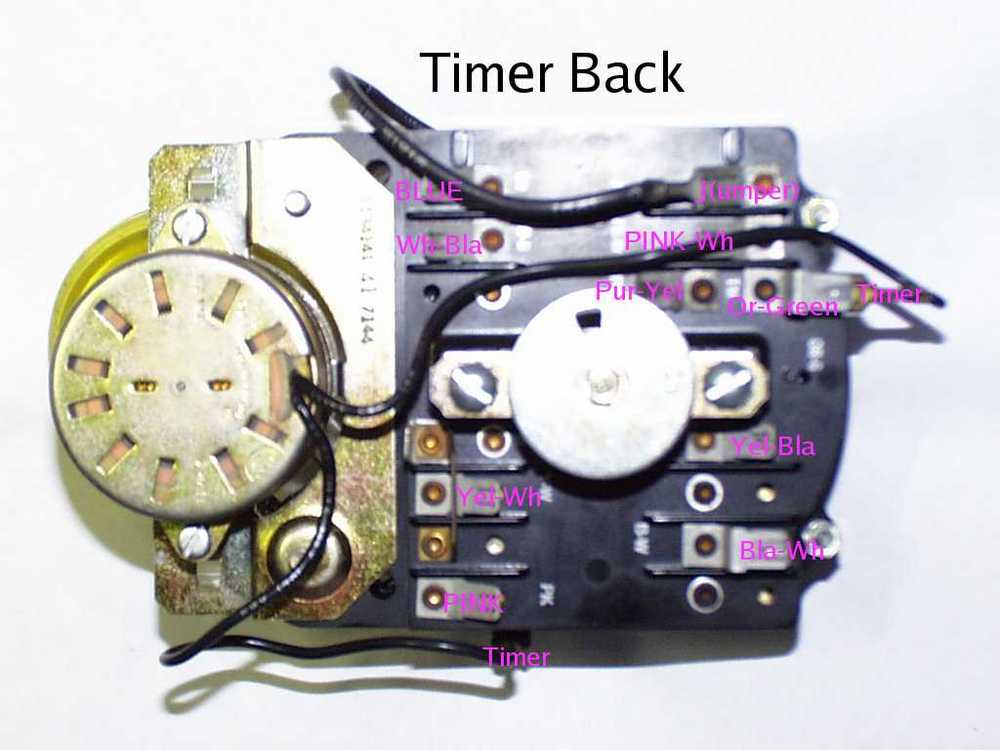
| ||
| Post# 220972 , Reply# 2 7/5/2007 at 21:24 (6,231 days old) by goprog () | ||
|
3 - Timer motor removed from timer control 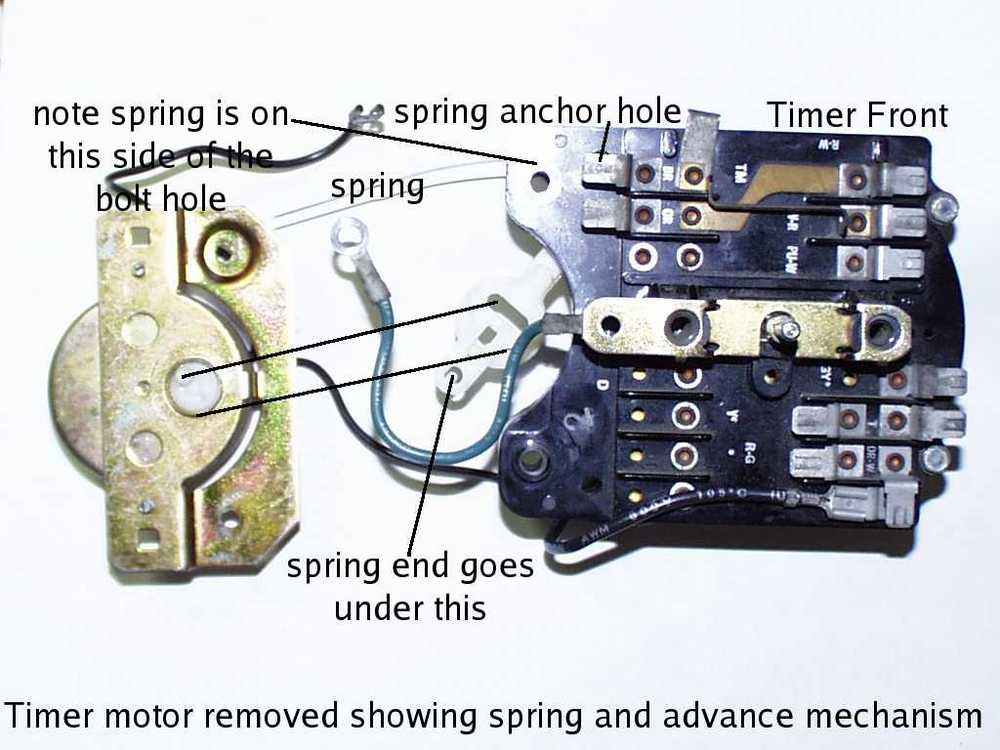
| ||
| Post# 220976 , Reply# 5 7/5/2007 at 21:37 (6,231 days old) by goprog () | ||
|
Picture showing the 2 (two) washers and spring location on the timer shaft, just in case someone should wonder. 6 - Timer Shaft washers and spring 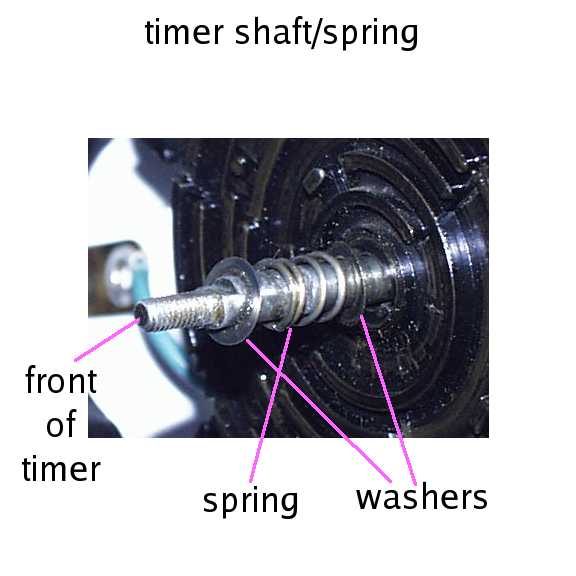
| ||
| Post# 220983 , Reply# 9 7/5/2007 at 22:09 (6,231 days old) by goprog () | ||
|
I see I made a mistake. There are no screws that hold down the piece on the front of the timer above the two spring wires that fit in the shaft grooves. You may have to push/hold the springs out of the way with something to separate the two halves of the timer. | ||
| Post# 220990 , Reply# 10 7/6/2007 at 00:23 (6,231 days old) by roto204 (Tucson, AZ) | ||
WOW. | ||
Post# 221053 , Reply# 11 7/6/2007 at 09:40 (6,230 days old) by unimatic1140  (Minneapolis) (Minneapolis) |
||

Hey Goprog, thank you for the very cool and detailed information. We love that kind of stuff around here. Over the past few years I’ve begun restoring all of my own timers, before that I would just send them out to Midwest Timer Service, but their work has become very “spotty” as of late and over 50% of the timers I’ve received back from them have an issue of sorts. I believe there is a someone down in Florida who does timer work and seems to do a good job. But these old timers are becoming more rare and charging $$$ for simple timer work so it is VERY important for us to learn how to work on our own timers now. The two major two types of mechanical timers used in vintage automatic washers are made by Mallory and Kingston. GE also produced all of the own timers, and they are very simple to work on, as they were made to be repaired in the field. The nice thing about Mallory timers is if the contact just needs to be sanded, they have two access panels that come off so you can reach most of the contacts without having to take them apart. By the way I see you are in MN, YAY another member in the Minnesotan contingent. Are you here in the metro? 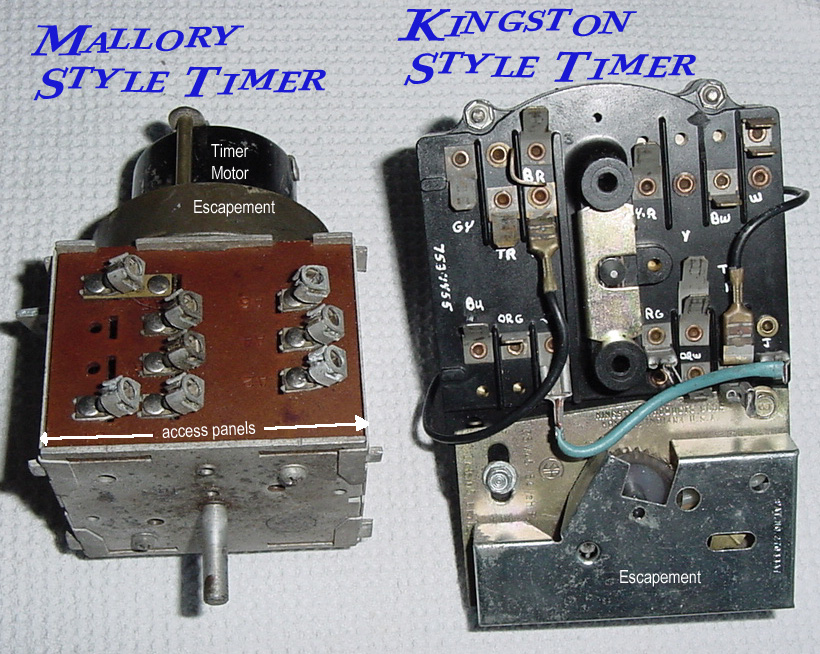
| ||
Post# 221198 , Reply# 13 7/7/2007 at 09:58 (6,229 days old) by unimatic1140  (Minneapolis) (Minneapolis) |
||
 | ||
| Post# 221216 , Reply# 14 7/7/2007 at 13:34 (6,229 days old) by goprog () | ||
|
To do this requires removing/drilling out the old contact rod and riveting in the new one? | ||
Post# 221343 , Reply# 15 7/8/2007 at 09:05 (6,228 days old) by unimatic1140  (Minneapolis) (Minneapolis) |
||
 | ||
Post# 221804 , Reply# 16 7/10/2007 at 13:43 (6,226 days old) by jetcone  (Schenectady-Home of Calrods,Monitor Tops,Toroid Transformers) (Schenectady-Home of Calrods,Monitor Tops,Toroid Transformers) |
||
Robert | ||
Post# 221838 , Reply# 17 7/10/2007 at 18:54 (6,226 days old) by unimatic1140  (Minneapolis) (Minneapolis) |
||
 | ||
Post# 221870 , Reply# 18 7/10/2007 at 21:34 (6,226 days old) by jetcone  (Schenectady-Home of Calrods,Monitor Tops,Toroid Transformers) (Schenectady-Home of Calrods,Monitor Tops,Toroid Transformers) |
||
No, on my Combos
there is a Mallory timer motor attached to a drive mechanism that drives the indicator wheel on the dryer control. It looks alot like your washer timer except there is no escapement, just a box with gearing connected to the timer dial. My timer motor is dead so it won't advance the drive that moves the indicator wheel. I am wondering if a washer timer motor runs the same way as a dryer timer motor? I don't see why it wouldn't but I do know the early Maytag/Mallory timer motors ran CW and the Bendix/Mallory were CCW. Or vica versa. So you can't put a Maytag/Mallory timer motor on a Bendix. The dial will run backwards. | ||
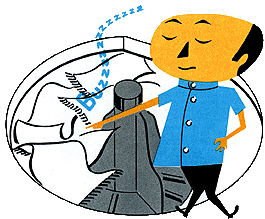
 Comes to the Rescue!
Comes to the Rescue!